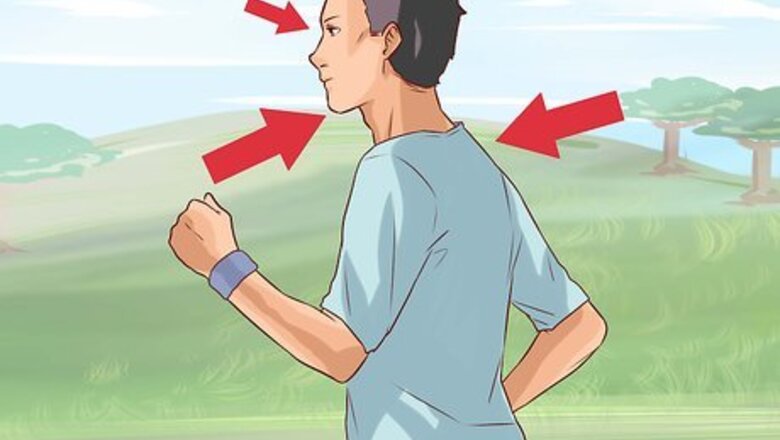
views
X
Trustworthy Source
American Heart Association
Leading nonprofit that funds medical research and public education
Go to source
And the faster you do it, the more benefits you'll reap. To get your natural pace up to fitness walking levels, you'll need the right posture, the willingness to train, and 30 minutes to an hour four days a week. Are you ready?
Having Good Form
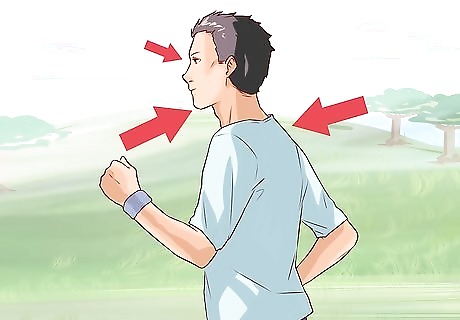
Keep the right posture. As you walk, your chin should be up, your eyes gazing directly in front of you, your back straight, chest raised, and shoulders relaxed. It may help if you pretend you're walking in a straight line to keep your body in the correct position. It'll be easier to be conscious of your body if you take a minute to warm up beforehand – and it'll help prevent injury. Cool down, too, for the same reasons.
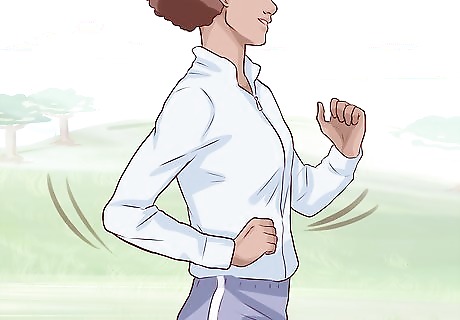
Use your arms. Your arms should be at your sides, bent at just under 90 degrees. Cup your hands gently – don't clench them – and swing them front to back, not side to side. They should be going out in front of you, not crossing. Using your arms will fuel your workout, too, helping you burn more calories. With more muscle groups being used, you'll get more out of your workout.

Take smaller strides. It's a common misconception that taking longer strides helps you walk faster, and on the surface, it makes sense. However, it actually slows you down. How fast can your feet touch the ground if you're taking huge strides? Not very. Take shorter, smaller, quicker steps, and you'll actually get to where you're going faster. Don't compromise your form to do so. You'll probably have the urge to elongate your steps (it's natural and how you likely normally walk), but resist. Keep good posture, use your arms, and your feet with fly underneath you.
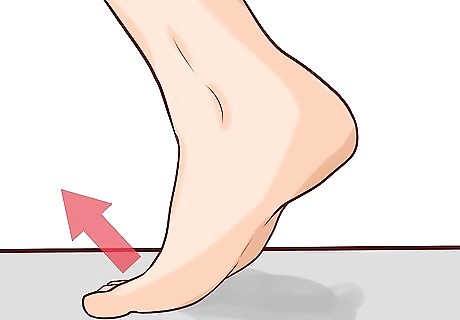
Push off with your toes. You want to roll through from heel to toe when your foot hits the ground. Start with the back of your foot, and move forward, as if you're wiping gum off the bottom of your shoe. Pushing off with your toes also engages your leg and butt muscles, giving you a better workout. The natural spring of your calf muscles will propel your body forward, keeping your momentum. This landing is natural and how your foot craves to hit the ground – deviate from it and you risk injury.

Tighten your abs and butt. As you walk, flatten your back and tilt your pelvis (your hips) ever so slightly forward. Keeping everything tight and being conscious of your muscles gives you a more full-bodied workout and gets your entire body into gear for faster walking.
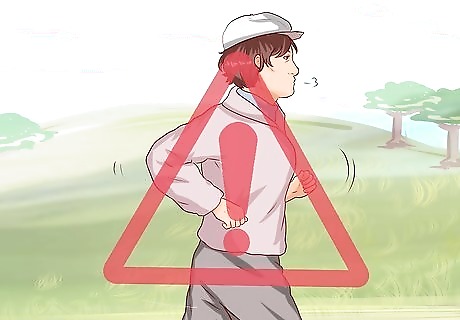
Don't think of it as "power walking." When most of us think of "power walking," we imagine people with their arms swinging about, taking wide, almost ridiculous-looking steps. That should not be what your aim is. You want to glide on the ground, not stomp carelessly all over it. Some professionals are beginning to coin the phrase "fitness walking." And it makes sense – a brisk walk can burn just as many calories as a run, and it's much less damaging for your muscles.
Making It Fun and Enjoyable
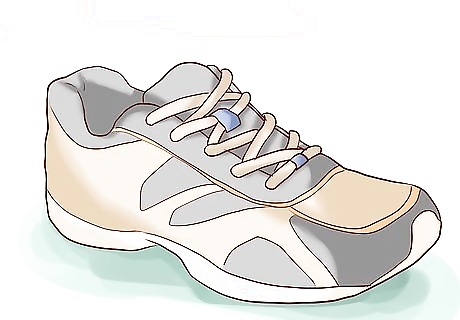
Choose a pair of good shoes.There has been a ton of research as of late that goes against the reign of the cushioned shoe. The best shoe for your foot is actually one with minimum cushioning and that's flexible at the front. Why? When your foot hits the ground, it's looking for a hard surface. Too much padding and it'll strike the ground much harder than it should to find the surface it's looking for. In short, it'll seek out an otherwise avoidable injury. And while you may be tempted to shovel out that wad of cash for those nice shoes, research says you shouldn't. Low and medium-cost shoes actually are just as good, if not better, when it comes to comfort and performance.

Find a nice place. It is very important to find a flat, solid ground for your walk or you will tire easily – or worse, get injured. If you don’t know where to go, go to the nearest trail, school, park, nature center, or even mall, when shoppers are few. Trails are great for getting some fresh air and not having to worry about crossing streets and traffic. But if you live in an area that's cold half of the year, you'll need to walk somewhere inside. In that case, malls (they generally open for walkers earlier) and indoor gyms are your best bet.

Bring the tunes. Sometimes a good, quiet walk is nice for your mood, but other times you'll need some swift beats to keep your legs moving. Bring whatever music device you own, some headphones, and see how it keeps you going. Make sure the music is energetic and lifts you up – the right tunes can get you in the zone. If you're feeling particularly diligent, create a playlist of songs that fall under 75-130 BPM. This will be your sweet spot that you want to stay jiving to. And if you follow their beat, some will bring you up and some will bring you back down, but you'll always be moving swiftly.

Go with a friend. There's little better than someone else gallivanting along at your side to keep you going – you don't want to be left in their dust, do you? In addition to helping you set a pace and stick to it, if you're in shape enough, you could hold a conversation. And if you can't, you can set of goal of being able and watch your progress develop. Try going with a friend only once in a while, too, to mix it up. You may find that sometimes a solitary walk is more what you're in the mood for. And bring a friend along once in a while can make it exciting, as opposed to part of your normal, everyday routine.

Experiment walking at different times of day and at different places. In order to keep this healthy habit of yours, you'll have to find your ideal time and place for fast walking, so experiment. Do you prefer trails or in the gym? Sunrise, sunset, or somewhere in between? And once you do find your favorite, you may still want to mix it up once in a while. You may get used to your scenery and stop noticing how beautiful it is. A walk or two in your mall may make you feel like you're noticing the flowers again for the first time once you go back outside.
Getting (and Staying) Motivated
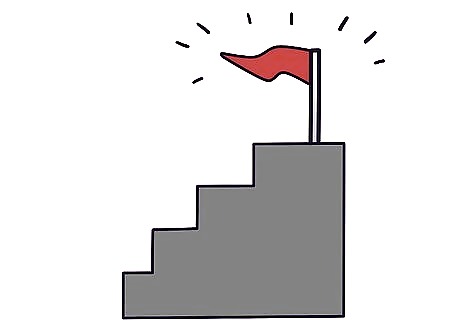
Set goals. It's hard to stick to just about anything if we don't have something to work toward. Whether it's your job, a diet, or a new habit you're trying to develop (or an old habit you're trying to kick), goals can help keep you on the right track. Here are a couple of examples: Time how many steps you take in one minute. Do this three times a day (any more and you might wear yourself out) and watch your numbers slowly climb up. Match pace to the fastest songs on your playlist, back to back. Use markers to walk quickly towards. See that bench up there? You're going to power walk all the way to it, resisting the urge to slow down.
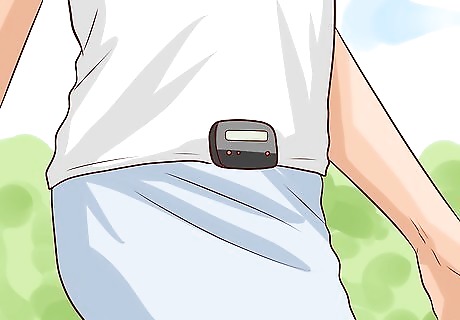
Wear a heart-rate monitor or pedometer. Walks, especially for fitness or weight loss purposes, can feel more effective if you're monitoring your progress and heart rate. A pedometer can show you how many steps you've taken. Believe it or not, it's recommended we each walk 12,000 to 15,000 steps a day. As for your heart rate, it depends on your level of physical fitness and your age. There are many charts available online; what's your training heart rate? Increase your workout time 10% each week. If you're walking 30 minutes 4 days a week (a good place to start), move to 33 minutes each session. This is a healthy percentage that won't leave you injured or fatigued.
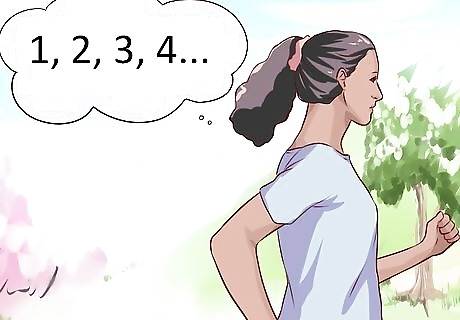
Monitor your pace. If you don't have a way to electronically measure your progress (like through an app on your phone) and you're not on a track where the laps measure your distance and you can time yourself, start counting your steps. How many can you do in 20 seconds? Then multiply by 3. If you're speeding along at at least 120 steps per minute (40 steps in 20 seconds, or 2 steps a second), that's 3 mph, which is the minimum pace for what's considered fitness walking. However, ideally, you'll be around 4 to 4.5 mph. The faster you go, the more health benefits you'll reap.

Stop every so often for some strength training exercises. To get even more out of your walks, stop every 5 or 10 minutes or so to do a few push-ups or some lunges. The extra burst of a work out is akin to interval training, surprising your body, using more muscle groups, and revving up the calorie burn. It may also keep you going longer. After a few push-ups and jumping jacks, your body may welcome the sweet release that is fast walking.
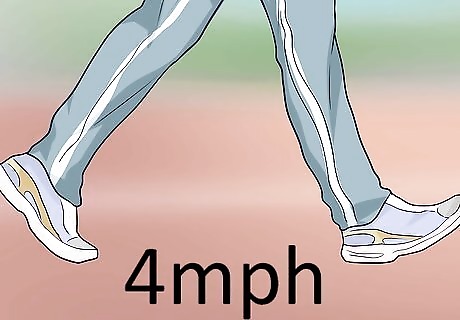
Know that to reap the health benefits, you've got to walk quickly. There has been a ton of research as of late that says walking is as good, if not better, than running. And while that's true, it seems only to be true if you're walking at or around 4 mph. The benefits decrease (and in some cases become nonexistent) the slower you go. It used to be believed that if you walked at, say, 2 mph but for twice the amount of time, that it was virtually the same workout. It's now been shown that while you may burn a similar number of calories, your muscles just aren't putting in the work that they need to do to keep your body fit.



















Comments
0 comment